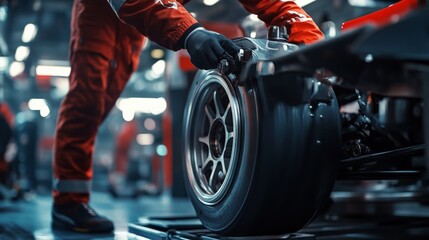Gutter Cleaning Service protects your home from costly repair bills and other potential issues. By ensuring that rainwater is effectively diverted, these services minimize the risk of rot, mold growth, and other water-related problems.

Professional gutter cleaners have specialized tools for a safe and thorough job. They also know how to identify issues like sagging or rusting that could lead to major damage over time.
Keeping gutters clean is an important part of home maintenance. Clogged gutters can lead to water damage and other serious problems, such as foundation cracks and roof leaks. Gutter cleaning services remove debris, dirt and leaves from the gutters and downspouts to ensure rainwater flows freely away from your house.
While you can do this job yourself, it’s essential to follow ladder safety protocols and avoid dangerous situations. Always choose a ladder that is rated for the job and place it on a stable, level surface. Use a spotter to hold the ladder and keep an eye out for falling debris. Always wear gloves and goggles to protect your hands from sharp objects and debris. You should also wear a hard hat for protection against falling materials. Additionally, you should wear a face mask to reduce exposure to spores and mold. A dust mask can also be useful if you plan on working in a particularly dirty area of your home or near trees or shrubs.
A thorough gutter cleaning involves the removal of debris, including twigs, leaves and trash from the gutter system and downspouts. It also includes trimming overhanging branches and regularly inspecting the gutters for signs of wear and tear that may escalate into bigger problems. A regular maintenance schedule helps prevent the need for more frequent cleanings.
Professional gutter cleaners are experienced in using specialized equipment to perform this task safely and efficiently. They know how to handle heights and use a variety of tools to remove stubborn stains, such as those caused by tree sap or bird droppings. Moreover, they are trained in the safe handling of rust and other hazardous chemicals.
In addition to cleaning the gutters, a professional service will also install a variety of preventative measures to protect your home. These include gutter guards that prevent leaves and other debris from entering the gutter channels, downspout extensions to carry water further away from your foundation and splash blocks to help reduce erosion around outlet points. In addition, they will test downspouts to make sure they are clear of blockages and regularly inspect the gutters for rust or other signs of damage.
Time
The time it takes to complete a gutter cleaning service depends on several factors, including the size of your home and the condition of your gutter system. For instance, a single-story house with easy-to-reach gutters might take 30 to 45 minutes to clean. However, a multi-story home might require more ladder work and take up to an hour or more. In addition, the type of debris that accumulates on your roof also affects how long it will take to clean your gutters.
Gutter cleaning professionals use specialized tools to thoroughly clean your gutters, including high-powered air blowers to remove small leaves and twigs, as well as handheld power washers to rinse away larger debris. They also inspect the gutter system for leaks and cracks, which can cause problems down the road. They also check the downspouts to make sure that water flows correctly.
Most homeowners should clean their gutters at least twice a year to prevent water damage and pest infestation. The best time to do this is in the spring and fall, when the weather is milder. Regular maintenance will also help your gutters last longer and minimize costly repairs.
Gutters are crucial for keeping water away from your house, preventing damage to the roof, walls, and foundation. When the gutters become clogged, the water will overflow and cause problems. This can include rust, mold, and insect infestation. Gutter cleaning services are a great way to avoid these issues and keep your home safe.
If you are considering hiring a gutter cleaning company, it is important to consider the number of times they will need to visit your property. Most professional gutter contractors will recommend a twice-yearly service, but this may vary depending on the climate of your area. If you live in a region that is often prone to rain and snow, then you might need to hire more frequent services.
The benefits of hiring a gutter cleaning service are numerous. They will clean your entire gutter system, including the downspouts and eavestroughs. They will also inspect the gutters for leaks and cracks and repair any damaged sections. In addition, they will check the roof and chimney for debris that may be causing problems.
Cost
Gutter cleaning services help homeowners maintain a safe and healthy home. Regular gutter cleaning reduces the risk of expensive water damage and prevents pest infestations. Homeowners should hire a professional company to clean their gutters at least twice a year, preferably in the fall and spring. However, if your gutters are clogged, you may need to schedule more frequent visits. This service ensures that your gutters are cleaned thoroughly and inspected for any problems. It also helps to save on expensive repair bills in the future.
The cost of a gutter cleaning service depends on several factors, including the size and location of your home, the condition of the gutters, and the time of year. A basic cleaning will cost between $70 and $150 for a one-story house. The price will increase for larger homes and those with multiple stories. The price may also rise if the gutters are heavily clogged and require special equipment to remove debris.
Keeping your home’s gutters clean can save you money on expensive repairs and maintenance, including foundation cracks, exterior wall damage, roof damage, and mold growth. It can also prevent mosquitoes, ants, and other pests from nesting in the standing water. Gutter cleaning companies offer a variety of packages that include regular maintenance, repairs, and installation of gutter guards.
While you can do gutter cleaning yourself, hiring a professional can be more cost effective. A professional crew can quickly and safely clear leaves, pine needles, shingle grit, and other debris from your gutters. They also inspect gutters for signs of leaks, sagging, and rust. In addition, they can seal leaks and reattach loose sections.
The cost of a gutter cleaning service depends largely on the size of your home and the length of the gutters. You should also consider the type of gutters on your property, as some types are easier to clean than others. For example, seamless gutters are easier to clean than sectioned, welded gutters. It is also important to factor in the cost of labor and the type of equipment used.
Expertise
A professional gutter cleaning service is a smart investment in your home. The service can spot problems, such as leaks and sagging troughs, before they cause costly damage. Gutter cleaning professionals have the tools and expertise to get the job done quickly and efficiently. They can also inspect and repair any damaged areas, ensuring that your gutters are working properly.
Clogged gutters can lead to serious problems, including water damage and foundation cracks. In addition, standing water can attract insects and encourage mold growth on shaded exterior walls. Gutter cleaning services can remove leaves, pine needles, shingle grit, and pollen buildup and ensure that your gutters are flowing as they should. Gutter cleaning services can save you money by preventing expensive repairs, and they can help protect your home from pest infestations.
Many homeowners choose to clean their own gutters, but DIY methods can pose a number of risks. Ladders can be dangerous, and lack of proper equipment may result in incomplete cleaning or even damage. Professionals use ladders and specialized cleaning tools to safely and thoroughly clean your gutters. They can also clean and inspect your roof for potential damage, ensuring that your gutters are secure.
Local weather patterns make gutter maintenance especially important. Heavy snowmelt in spring, frequent summer rainstorms, and leaf-filled autumns can add to the stress of your gutter system. Regular cleanings ensure that water is directed away from your home, protecting your foundation and keeping your siding in good condition.
Most professional gutter cleaners recommend twice-yearly cleaning, once in the spring and once in the fall. This schedule helps prevent clogs from the accumulation of leaves and other debris during these seasons.





